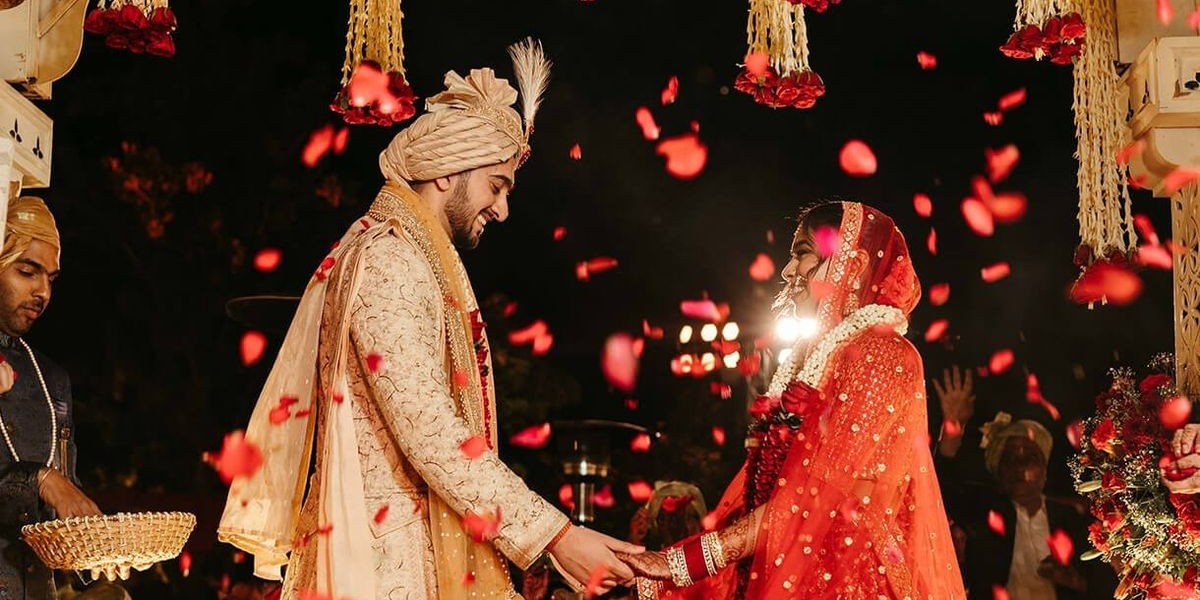Alwar sits at an evocative crossroads: close enough to Jaipur’s royal legacy to feel its palace glamour, and rooted in the local Rajasthani traditions that make weddings in this region instantly recognizable. Brides in Alwar are increasingly blending centuries-old cultural signifiers with contemporary beauty thinking — the result is looks that read regal in daylight, cinematic at night, and flawless in photographs. If you’re planning a bridal look here (or working as a makeup artist), it helps to understand both the historic visual vocabulary and the modern trends that are shaping how brides choose to present themselves.
The cultural foundations: what makes a Rajasthani-inspired bridal look
Traditional Rajasthani bridal aesthetics are dramatic by design. Expect bold black kohl, sculpted brows, and richly pigmented lip colors (deep reds, maroons, and magentas) that echo the saturated textiles and jewellery typical of the region. Jewelry such as the rakhdi/borla (a round maang-tikka style unique to Rajasthan), heavy kundan and meenakari sets, and the use of alta or henna on hands and feet all inform how makeup is composed: eyes are emphasized to balance the weight of forehead ornaments; cheeks are given warm, flush tones to sit well beneath heavy stoles and veils. These cultural signifiers aren’t merely decorative — they carry regional identity and are frequently chosen to honor family and ancestral aesthetics.
The modern overlay: skin-first and photography-aware beauty
While tradition remains central, the last few seasons have seen a pronounced “skin-first” shift across wedding beauty. Brides want healthy, prepped complexions that read as luminous both in close-ups and in high-definition video — a reaction to social media and streaming coverage of multi-day ceremonies. This means more time and budget for skincare (facials, chemical peels, microneedling for texture), plus a preference for dewy, hydrated finishes rather than heavy matte bases. Makeup artists in Alwar are responding by offering tailored skin prep packages, lighter foundations layered for coverage, and hybrid products (tinted correctors, glow primers) that photograph well while feeling comfortable on long, heated ceremonies.
Event-specific palettes and looks in Alwar
Rajasthani weddings are multi-event affairs, and each function invites a different makeup language. Haldi looks lean toward sunlit warmth — soft golds, coral blushes, and minimal base — while sangeet and reception allow for more experimentation: colored liners, metallic lids, or modern reinterpretations of the classic smokey eye. The bridal day typically remains the most traditional: strong liner, saturated lip, and sculpting that complements heavy jewelry and ornate lehengas. Local makeup artists often propose a tonal map for the week (e.g., pastel for mehendi, warm spice for haldi, jewel tones for the wedding, and glossy glam for the reception) so the bride’s looks feel cohesive across photo albums.
Fusion looks: honoring roots while staying contemporary
A growing number of brides in Alwar opt for fusion — combining Rajasthani ornaments like a borla or meenakari choker with soft, modern makeup: blurred brows, skin-like foundation, and a softly stained lip rather than solid red. Floral accessories (fresh or silk) do double duty: they nod to local flora and provide a softer counterpoint to the heavy metalwork of traditional jewelry. This hybrid approach respects cultural signposting while allowing the bride’s personal aesthetic to come forward, and it also translates well in destination wedding shoots that favor both authenticity and editorial sensibilities.
Techniques and products favored by Alwar makeup artists
Makeup artists in Alwar increasingly combine long-wear formulas (to survive humidity and hours of ceremonies) with breathable textures. Airbrush foundations and waterproof liners are common requests; at the same time, many artists avoid cakey coverage by using light diffusing primers and setting products that maintain a natural sheen. Lashes and lash-lift services are popular, and artists often recommend bespoke color corrections (e.g., green-tinted correctors for redness under thicker bases) so photographs retain color fidelity. For brides with traditional jewelry, contouring is performed to ensure the face registers confidently under heavy headpieces and veils. Local artists — and the platforms that list them — will often advertise these combinations of services, so it’s wise to check portfolios and ask specifically about product lists and trial outcomes.
Sustainability, craft revival, and local collaborations
A quieter but meaningful trend is the re-integration of local crafts and sustainable choices into bridal presentation. Brides sometimes commission artisan meenakari pieces or repurpose family heirlooms, and makeup looks are shaped to highlight these tangible connections — a specific bindi, a family tikka, or a vintage nose ring might dictate brow shape or lip tone. Additionally, some makeup artists collaborate with local florists and sari weavers to create cohesive looks that celebrate Alwar’s craft traditions rather than importing a fully packaged, generic bridal aesthetic. This movement not only supports small artisans but gives each wedding a stronger sense of place.
Practical advice for brides in Alwar
Start with skincare — invest months ahead in a consistent routine so makeup sits evenly.
Book a thorough trial — test your wedding-day lighting (daylight + flash/video) to ensure colors read correctly.
Work jewelry into the plan — bring the actual maang-tikka, veil, and choker to the trial so the artist can adapt the look.
Ask about product lists — flag any allergies and request long-wear, transfer-resistant formulations for key events.
Hire locally when possible — local makeup artists understand ceremonial timing, traditional ornamentation, and regional weather; platforms can help you discover vetted professionals. For listings, try searching for for bridal makeup artists in Alwar.






